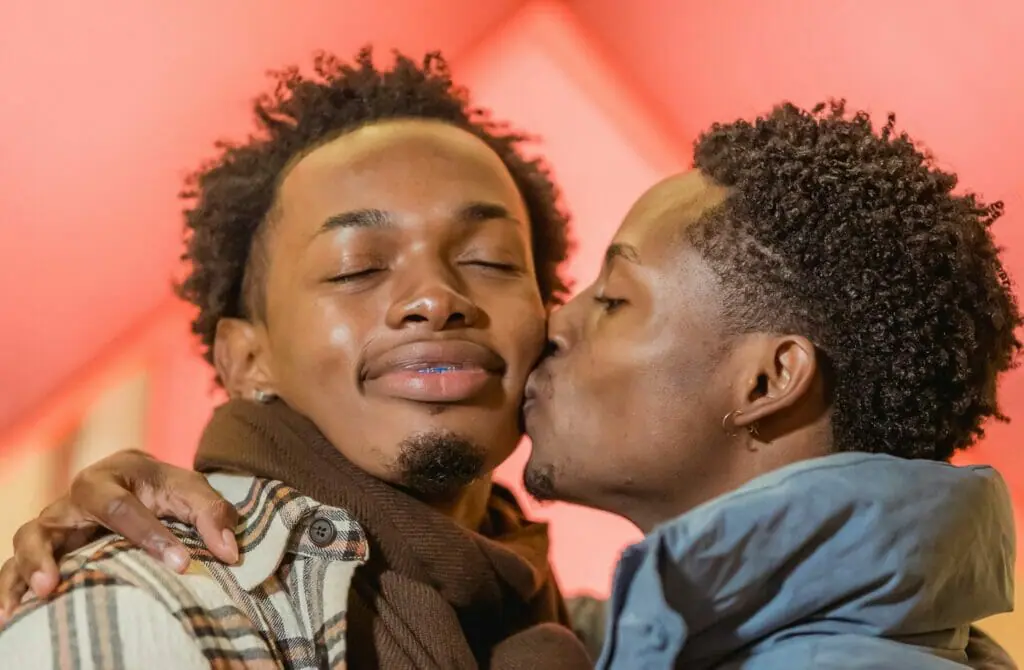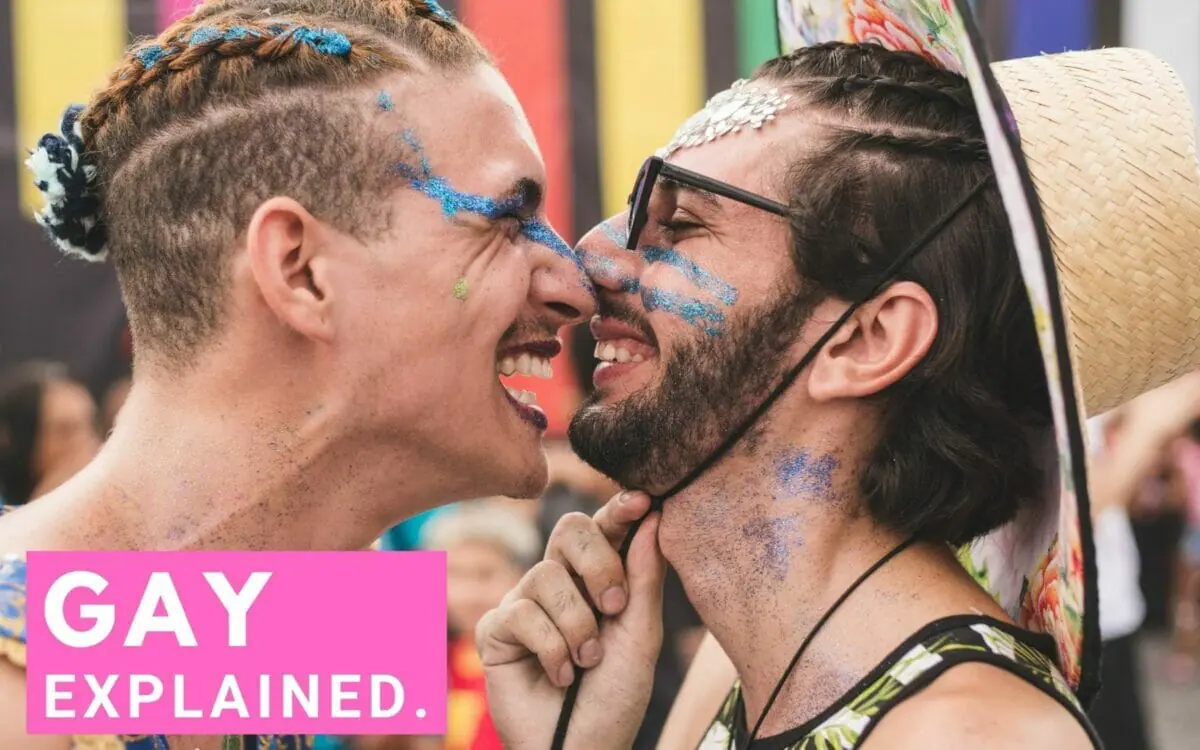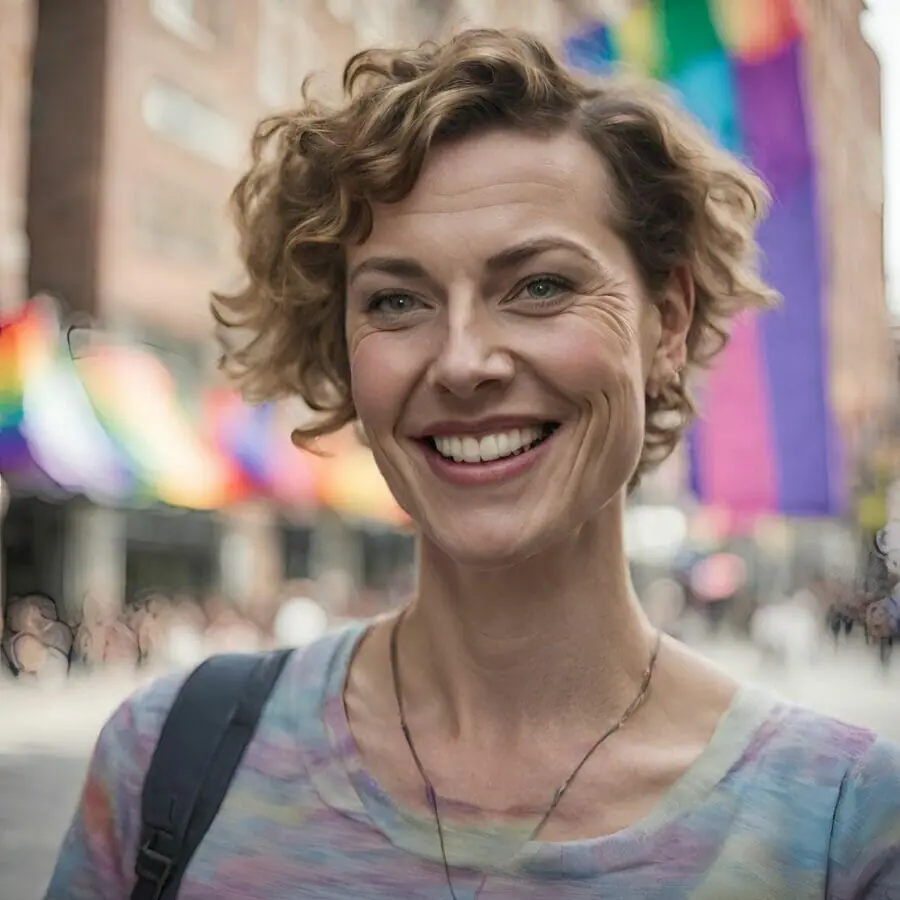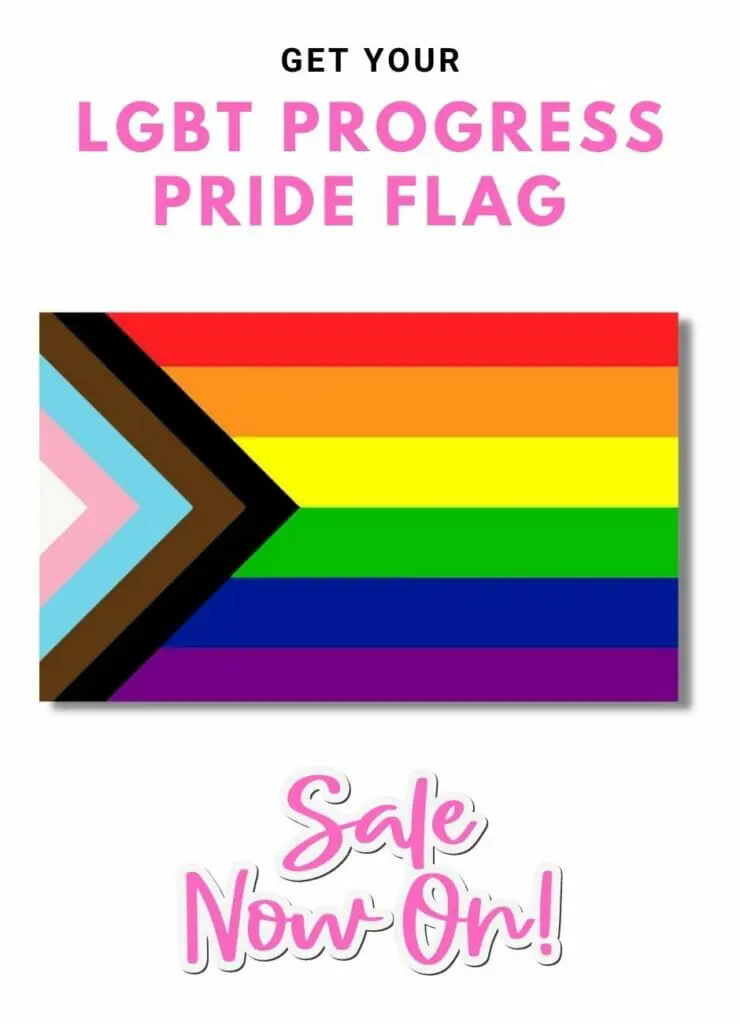There are many gender identities and sexual orientations that anyone can feel connected to or identify with.
More and more terms have been popularized over the years to represent the emotions and experiences of queer individuals and if you aren’t immersed in the LGBTQ+ culture or the queer community, you might not recognize a few sexual orientations and gender identities due to a lack of representation in mainstream media.
While gay is not typically one of the terms, we are still going to talk about what does it mean to be gay, explain what does the gay pride flag means, and help you with some information to become a better ally to gay individuals and the queer community at large.
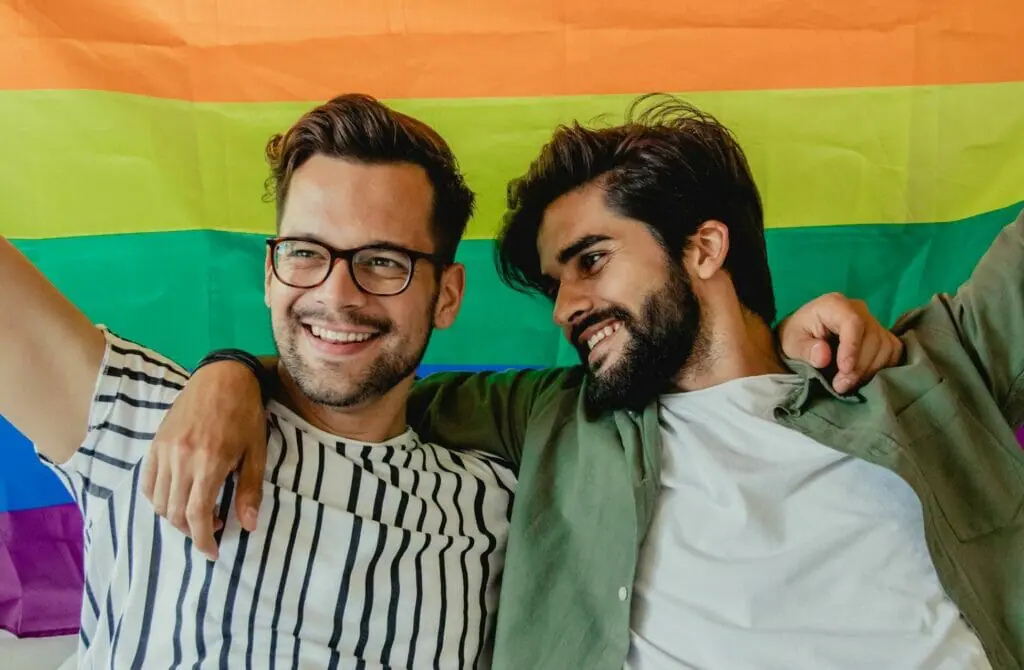
In this article we will cover...
What Does Gay Mean?
Simply put, being gay means being a man who has sexual and romantic attraction to other men.
Many gay men (Men loving Men-MLM) say that they had experiences with same-sex people at a young age. This is usually a normal part of exploring sexuality. Men who identify as gay usually don’t have a physical or emotional attraction to women but rather have a strong attraction towards other men. Society puts a lot of pressure on men and many feel required to be straight. Others feel the pressure to be purely heterosexual, when they may be bisexual, pansexual, or another queer identity.
Unfortunately, placing this kind of pressure on gay men causes many younger gay men to be scared of showing their sexuality and feel isolated. It’s vital to remember that there are gay individuals in each country and culture and being gay has nothing to do with someone’s personality but is rather a form of sexuality.
Like other sexual orientations, there’s no explanation for why some men are gay and others aren’t. We are born with our sexual orientation and if someone identifies as gay, that’s just who they are. Some men experience same-sex attraction when they are young and others’ feelings may emerge later in life.

Gay Male Pride Flag Meaning
There are many different pride flags symbolizing most queer identities, so it should come as no surprise there is a flag for aceflux people to proudly fly.
The gay male flag, which is blue and azure in color, represents men’s attraction to one another as well as the richness of the gay community. The colors blue and azure were chosen for the gay flag because they are associated with the symbolic representation of males, particularly gay men.
There are seven horizontal bands on the flag: The first three bands are azure in a dark to light gradation of azure then sky blue and light sky blue. The fourth band is white, and the fifth one is a grey light blue color followed by the sixth and seventh stripes that are light and dark blue respectively. From top to bottom, the colors represent: community, healing, joy, GNC, and trans men, pure love, fortitude, and diversity.
The purpose of this flag was to enhance the visibility of the gay community as a distinct part of the larger LGBT community, as well as gay people’s awareness of their own unique difficulties.

These include challenges such as:
- Gayphobia and misandry
- Demonization of gay men (in addition to unfair accusation of child molestation and unacceptable perversions).
- Issues with reproductive opportunities and rights such as access to surrogacy services.
However, it is fair to say that most gay men prefer to simply use an iteration of the rainbow LGBTQ+ flag that is more representative of the entire queer community. For this reason, we recommend flying the LGBT Progress Pride Flag.
For the last 40+ years, the iconic LGBT Pride flag produced by Gilbert Baker’ with its six distinguished colors (red, orange, yellow, green, blue, and violet) has been the globally recognized symbol of the gay / LGBT community.
But in the past few years, Pride festivals, companies, and activists worldwide have concurrently and without any coordination been embracing ‘The Progress Flag’ as their emblem for the queer community instead.
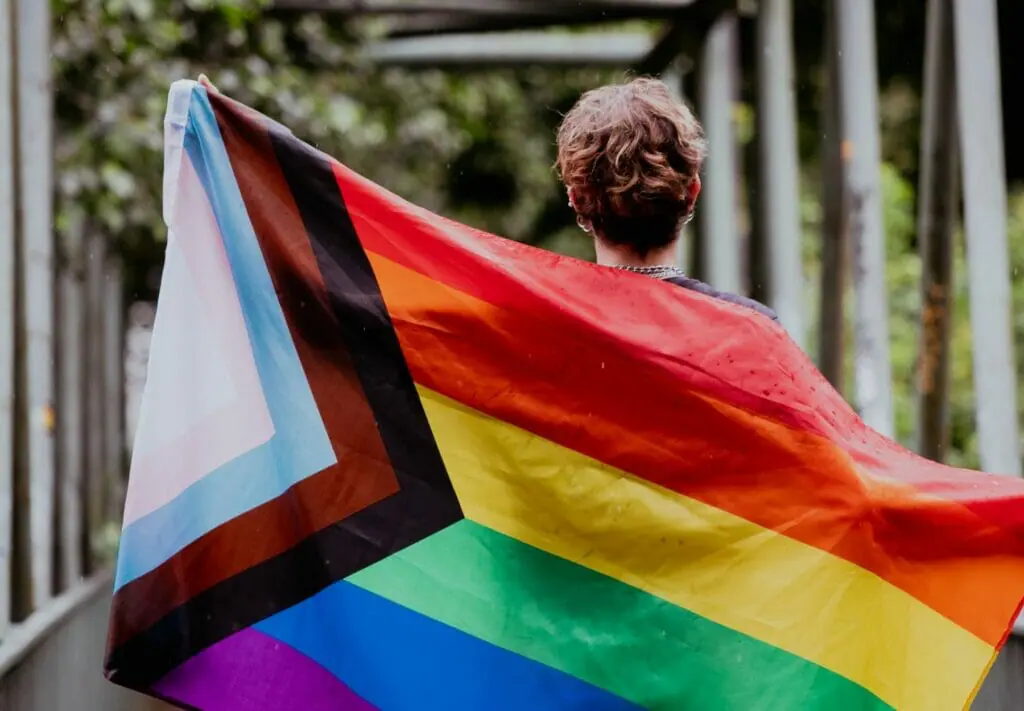
Created by Daniel Quasar in 2018, the Pride Progress Flag features black and brown stripes to portray marginalized LGBTQ+ communities of color and baby blue, pink and white to incorporate the trans flag in its design.
Daniel displaced the trans flag stripes and marginalized community stripes to the flag’s hoist, where they form a new arrow shape. The arrow leads to the right to confer forward movement while purposely being along the left edge, pointing to the fact that much progress still needs to be made.
From the London Mayor’s office to Fort Lauderdale Pride and various cultural institutions worldwide–the symbol being used to serve LGBT people is evolving. And it’s all part of a journey to be more inclusive of the expansive breadth of identities within our community.
The intention behind this change is not to replace or erase what the Pride flag was, but rather to recognize the value of all parts of our modern queer community, which the Progress flag does a better job of.
And considering the current Black Lives Matter movement and specifically the focus on issues faced by queer trans people of color (QTPOC) with our community – this shift towards the use of the more inclusive Pride Progress symbol is one should all fully support and encourage.
Hopefully, in doing so, we can start or continue a conversation not only about trans and POC representation within our community–but about bisexual, pansexual, and asexual people. And the progress that is still to come for the fabulous expanse of gender identities, romantic and sexual orientations we don’t talk about enough yet.
The significance behind the Pride Progresses flag’s design is an excellent encapsulation of where the LGBT community stands. We are a community that has, and is, making exceptional progress. And yet, we still have so much more to do!
Gay Pride Day
Education, visibility, commemoration, and appreciation are all critical in promoting global acceptance and acknowledgment of queer identities and queer folx in general. And from experience, we know it is easier for gay individuals to talk to friends and loved ones – and to feel the love – when a worldwide day for gay is observed. Not to mention it also helps foster awareness and increased sensitivities from society at large.
So, mark your calendar and do something special (even if it’s just a social media post!) for August 14th which is Gay Uncle Day, or June 28th which is Stonewall Riots Anniversary. Or celebrate gay and other rainbow identities during PRIDE MONTH!
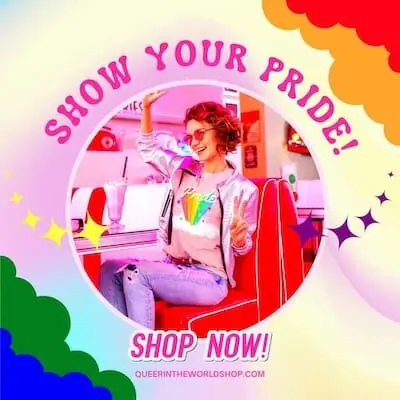
Other Gay Information to Help You Be a Better Ally
Being an ally to the LGBT community is vital. However, you must remember that gay men face unique challenges due to their sexual orientation. Being an ally means you educate yourself about misconceptions and experiences of the gay community. It also requires you to be more accepting of gay individuals.
Remember, no gay experience is identical to another. You can’t tell whether someone is gay by looking at them, observing their personality, or their physical aesthetic. None of these characteristics can provide a clue as to how a person identifies, and this is as true for gay individuals as it is for any gender or sexual orientation.
The first thing you should do as an ally to gay people is to believe them when they tell you about their identity. Don’t try to argue them out of it or make the mistake of thinking you could know more about how they feel than they do. It could also help if you worked on your mindset. Working on your attitude means you challenge your concept of gender, sexuality, and sex.
After all, if you have any issues with understanding gay people, the root cause is bound in your understanding of gender and sexuality – not theirs. Educating yourself (as you are by reading about what does gay mean!) is an excellent first step to increase your awareness and not make your lack of knowledge in this area a burden on them.
There aren’t any explicit rules or guidelines, but here are some thoughts on how you can be a better ally and support a loved one as you discover what it means to be gay.
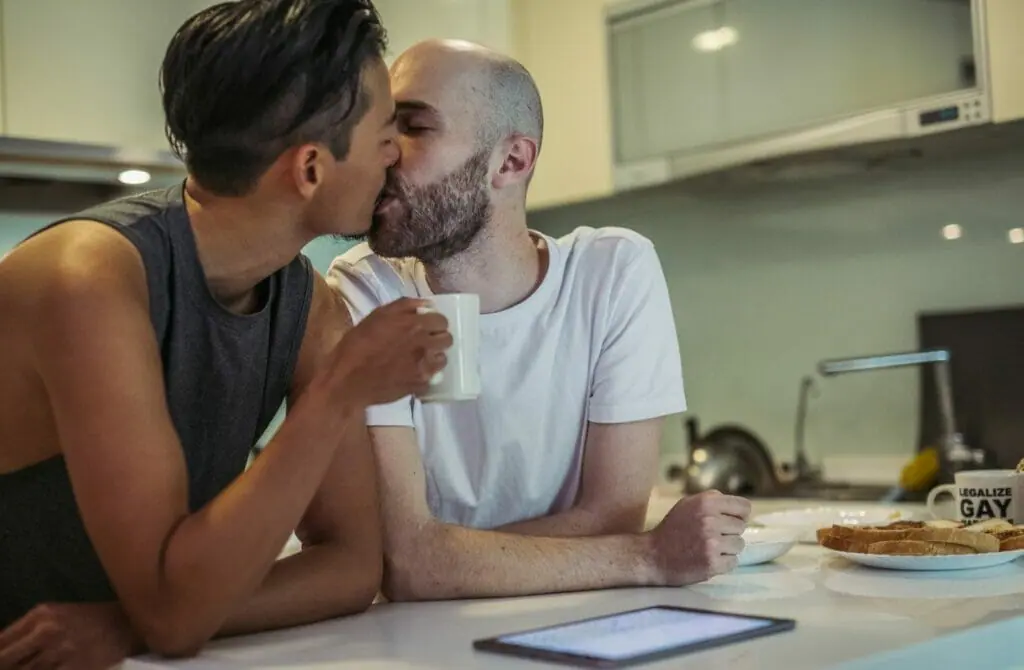
Being gay isn’t something that can be changed
Being gay isn’t a choice, and it’s not something that could be altered. The majority of experts think that sexuality is influenced by a number of factors, including genetics and environment.
Conversion therapy, or attempts to persuade someone to alter their sexuality, is potentially dangerous and has been denounced by mainstream medical organizations in the United States. The American Medical Association opposes therapy “based on the notion that homosexuality is a mental disease or that the person’s orientation should be changed.”
It’s crucial to understand that loving someone of the same gender you are is perfectly acceptable. If you’re experiencing same-sex attraction, you may want to tell your loved ones, or you may not be ready to do so just yet. It’s entirely up to you, but no one can take your identity away from you.
Gay people make great parents too
Many gay people have wonderful families and bring up successful and happy children. In fact, according to a 2014 study, there were very few disparities in family dynamic or social development between homes with same-sex parents and those with opposite-sex parents.

Validate your gay loved ones
The most critical thing family and friends can do to support their gay loved one is to continue to love him. Explain as soon as he discloses his feelings, that he is loved unconditionally and that his sexual orientation does not lessen how much he is appreciated and cherished.
A man needs to hear the most from others, and most especially from himself, is that he is OK just the way he is. He needs to realize that it’s alright to be gay if this is who he is and that he should be able to define for himself what being a man means.
You can’t tell they’re gay just by looking at them
Unless someone tells you they’re gay, you won’t be able to tell. Just because someone dresses a certain way or presents themselves in a particular manner doesn’t mean they’re gay. This has more to do with their personality rather than their sexual orientation.
Don’t make the mistake of assuming that someone is gay because of this since it’s possible they identify with a different gender.
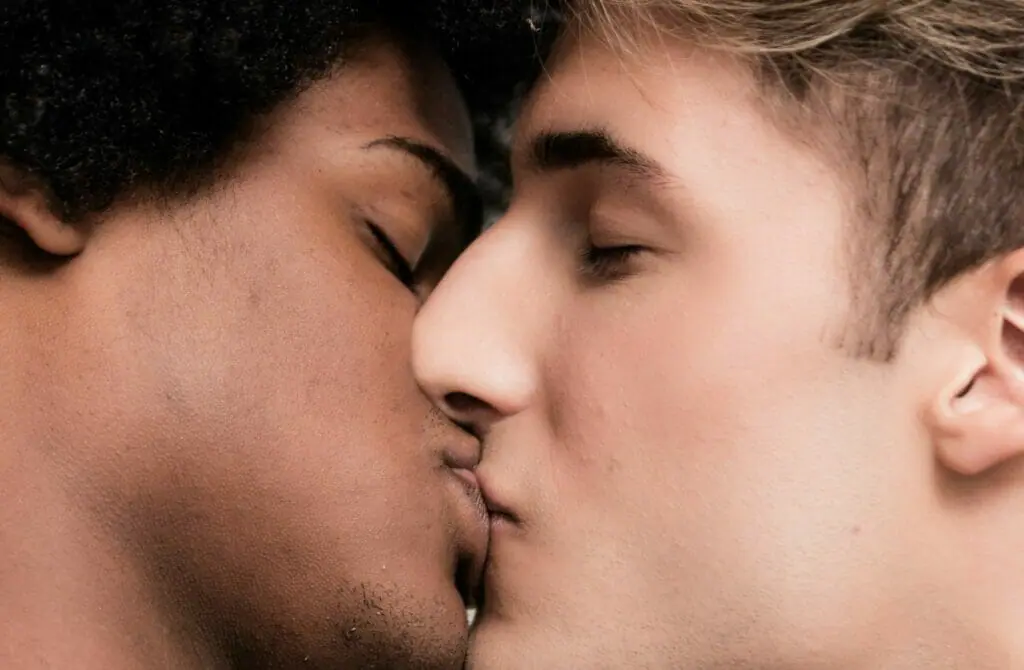
Speak up
People don’t speak up often when they hear something insulting, such as “that’s so gay,” for a variety of reasons. It can be awkward since people are unsure what to say or don’t want to aggravate the issue. However, words have the potential to cause harm. When you speak up, you educate others, letting them know that their remarks are not acceptable, and possibly inspiring others to do the same. You can also influence people’s behavior in the future. This is a powerful statement.
Question your privileges
These privileges that straight people enjoy in society on a daily basis. For example, the liberty to show desire or affection to the opposite gender in public such as hand-holding without fear of censure or even violence. In many parts of the world, being gay is illegal and showing that you’re gay can be harmful, lead to violence, or in some cases, jail terms.
Once you question your straight privilege, you’ll be able to better understand what gay people go through and support them as they fight for equality.
